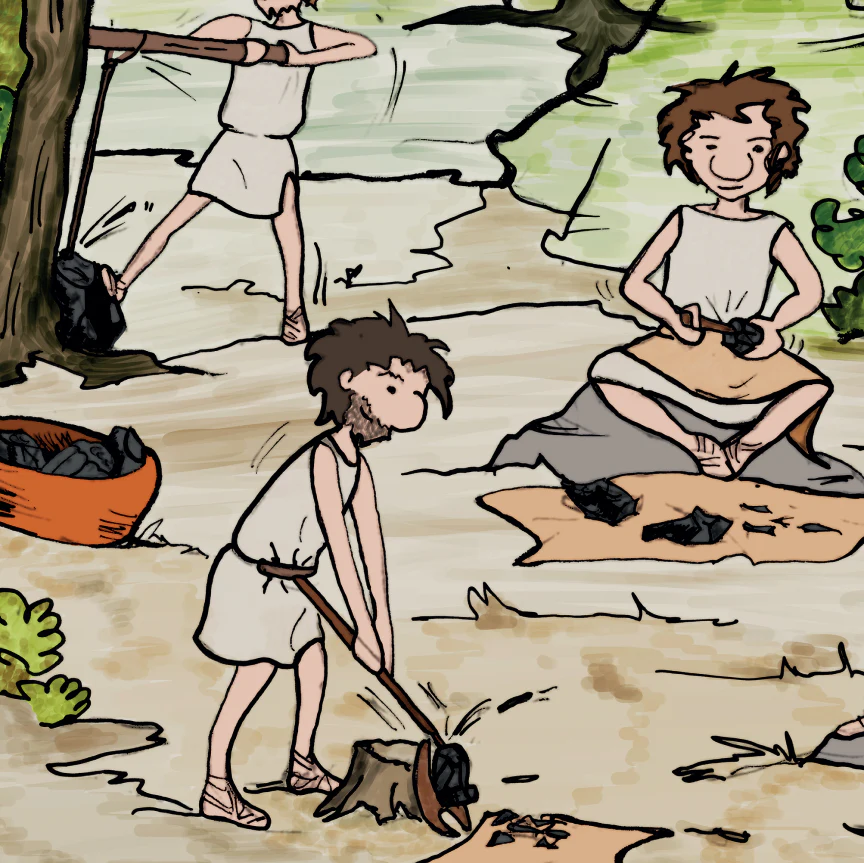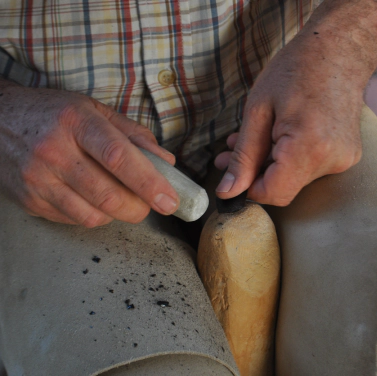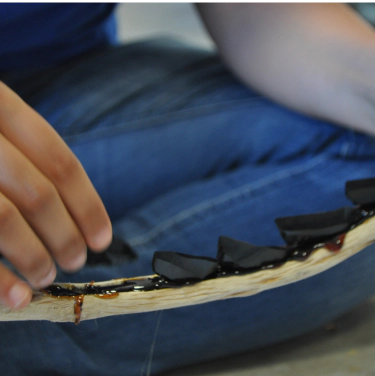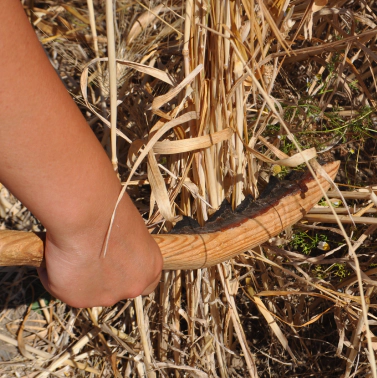Obsidian
as a resource
Processing techniques
Rocks such as obsidian, flint, and jasper, exploited in ancient times for the production of chipped artifacts, possess physical properties that enable them to record a wealth of information useful to the work of archaeologists.Each blow delivered to the stone is recorded as a mark, a faithful and definitive trace of the actions implemented. Based on the recognition of these marks and their interpretation, archaeology seeks to understand the extent to which they can be attributed to a technical gesture.

Direct percussion
This technique is practiced by going to strike in a precise and directional manner the block to be worked by means of a tool we call a “striker,” which can be lithic (stone), animal, vegetable or, in more recent epochs, metal.
The artifacts-sheets and blades-detached by means of direct striking tend to be thick and irregular, particularly if the striker used is made of hard stone.
Lithic tools for chipping, have also been found in the workshops of Pau.
Indirect Percussion
The technique of indirect percussion, distinguished by the use of an intermediary tool placed between the striker and the core, allows for greater control over the application of force and, therefore, for more regular supports than by direct percussion. Artifacts obtained by indirect percussion have straight edges and ribs and reduced thicknesses.
Experimental practice has shown that by indirect percussion, blades up to 30 cm long and very regular can be produced.


Pressure
This is the technique in which pressure is exerted on a given point of the core by means of a sharp instrument. The imposition of force in this case can be controlled in the best way, allowing thin blades with straight side edges to be obtained.
Blades whose length exceeds 40 cm are documented.
Accidents or machining errors are almost absent, which allows us to assume that an average of 50-100 blades could be made from a single core.
Employment
In the obsidian workshops found in the Pau area, it is rare to find finished tools; rough, standardized artifacts, intended for their immediate use, are found there more frequently. The museum displays a few types: burins, scrapers, scratchers and rare arrowheads, found far from the outcrop areas, indicating the performance of specialized activities such as hunting. A Bronze Age technological innovation in the Sennixeddu workshop is the reuse of Neolithic scraps.



